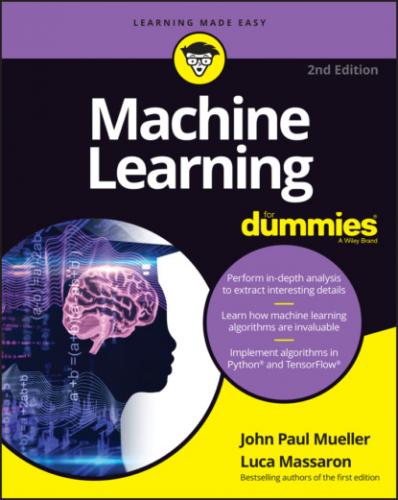7 Part 3: Getting Started with the Math Basics Chapter 7: Demystifying the Math Behind Machine Learning Working with Data Exploring the World of Probabilities Describing the Use of Statistics Chapter 8: Descending the Gradient Acknowledging Different Kinds of Learning The learning process Optimizing with big data Chapter 9: Validating Machine Learning Considering the Use of Example Data Checking Out-of-Sample Errors Training, Validating, and Testing Optimizing by Cross-Validation Avoiding Sample Bias and Leakage Traps Chapter 10: Starting with Simple Learners Discovering the Incredible Perceptron Growing Greedy Classification Trees Taking a Probabilistic Turn
8 Part 4: Learning from Smart and Big Data Chapter 11: Preprocessing Data Gathering and Cleaning Data Repairing Missing Data Transforming Distributions Creating Your Own Features Delimiting Anomalous Data Chapter 12: Leveraging Similarity Measuring Similarity between Vectors Using Distances to Locate Clusters Tuning the K-Means Algorithm Finding Similarity by K-Nearest Neighbors Chapter 13: Working with Linear Models the Easy Way Starting to Combine Features Mixing Features of Different Types Switching to Probabilities Guessing the Right Features Learning One Example at a Time Chapter 14: Hitting Complexity with Neural Networks Revising the Perceptron Representing the Way of Learning of a Network Introducing Deep Learning Chapter 15: Going a Step Beyond Using Support Vector Machines Revisiting the Separation Problem Explaining the Algorithm Classifying and Estimating with SVM Chapter 16: Resorting to Ensembles of Learners Leveraging Decision Trees Working with Almost Random Guesses Boosting Smart Predictors Averaging Different Predictors
9
Part 5: Applying Learning to Real Problems
Chapter 17: Classifying Images
Working with a Set of Images
Revising the State of the Art in Computer Vision
Extracting Visual Features
Recognizing Faces Using Eigenfaces
Classifying Images
Chapter 18: Scoring Opinions and Sentiments
Introducing Natural
